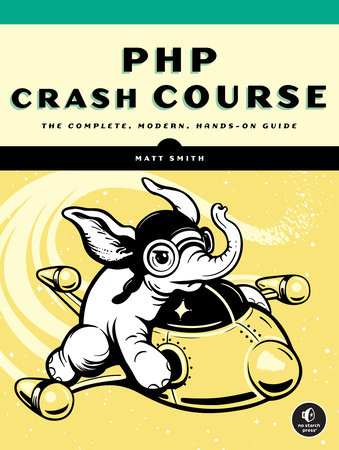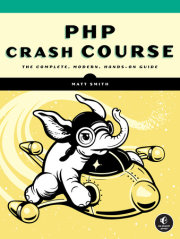Acknowledgments
Introduction
PART I: LANGUAGE FUNDAMENTALS
Chapter 1: PHP Program Basics
Chapter 2: Data Types
Chapter 3: Strings and String Functions
Chapter 4: Making Choices with Conditionals
Chapter 5: Creating Reusable Code with Functions
PART II: WORKING WITH DATA
Chapter 6: Repeating Actions with Loops
Chapter 7: Simple Arrays
Chapter 8: Sophisticated Arrays
Chapter 9: Working with Files and Directories
PART III: PROGRAMMING WEB APPLICATIONS
Chapter 10: Client-Server Communication and Web Development Basics
Chapter 11: Creating and Processing Web Forms
Chapter 12: Validating Form Data
Chapter 13: Organizing a Web Application
PART IV: STORING USER DATA WITH BROWSER SESSIONS
Chapter 14: Working with Sessions
Chapter 15: Implementing a Shopping Cart
Chapter 16: Authentication and Authorization
PART V: OBJECT-ORIENTED PHP
Chapter 17: Introduction to Object-Oriented Programming
Chapter 18: Declaring Classes and Creating Objects
Chapter 19: Inheritance
Chapter 20: Managing Classes and Namespaces with Composer
Chapter 21: Efficient Template Design with Twig
Chapter 22: Structuring an Object-Oriented Web Application
Chapter 23: Error Handling with Exceptions
Chapter 24: Logging Events, Messages, and Transactions
Chapter 25: Static Methods, Properties, and Enumerations
Chapter 26: Abstract Methods, Interfaces, and Traits
PART VI: DATABASE-DRIVEN APPLICATION DEVELOPMENT
Chapter 27: Introduction to Databases
Chapter 28: Database Programming with the PDO Library
Chapter 29: Programming CRUD Operations
Chapter 30: ORM Libraries and Database Security
Chapter 31: Working with Dates and Times
Appendix A: Installing PHP
Appendix B: Database Setup
Appendix C: Replit Configuration














